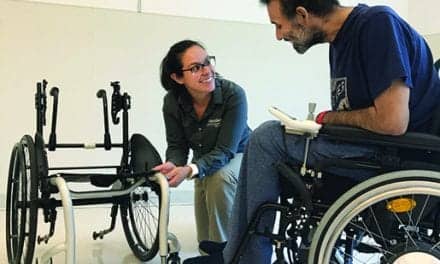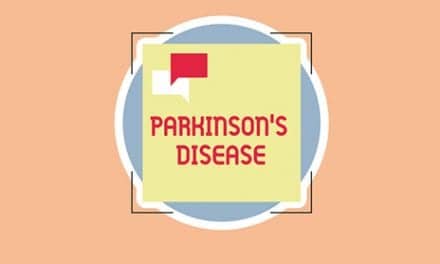
An underwater treadmill can help provide cardiovascular fitness regardless of an individual’s age with activities such as water jogging.
Hydrotherapy: The healing properties of water have been documented throughout history and ancient times. Various forms of hydrotherapy have been recorded in ancient Egypt, Persia, and Greek and Roman civilizations. Egyptian royalty bathed with oils and flowers, while Romans had communal public baths for their citizens. Hippocrates prescribed bathing in spring water for sickness. China and Japan also have a long history of incorporating water into their cultures and healing environments. According to the Centers for Disease Control and Prevention, swimming is the fourth most popular sports activity in the United States, and a good way to get regular aerobic physical activity.1
The therapeutic properties of water combined with the skills and specialized training of an aquatic specialist are a superb combination that can help address the rehabilitation needs of patients. Physical therapists, occupational therapists, exercise physiologists, and other staff members within wellness centers can be specially trained in helping patients utilize water therapy to address conditions that range from postsurgery issues to chronic disease. Given the growing popularity of participating in sports and activity in general, hydrotherapy continues to grow as a very important treatment modality to help the different generations push themselves to achieve milestones. Whether the goal of the individual who is using hydrotherapy is to qualify for the Olympic team or improve balance related to Parkinson’s disease, hydrotherapy provides an array of health benefits to an expansive patient population.
Training Setting
East Jefferson General Hospital (EJGH) is a community-owned hospital located in Metairie, La, a suburb of New Orleans. The facility is a full-service inpatient hospital, and able to offer residents of the community a full continuum of services to address their specific training needs. This includes an expansive Wellness Center and Outpatient Rehab Clinic that offers professional training and rehabilitation designed to help athletes as well as clients affected by orthopedic and neurological issues achieve their goals, whether for recovery, rehabilitation, or performance.
The Wellness Center is a 38,000-square-foot facility equipped as a state-of-the-art medical fitness facility with a pleasant and comfortable environment. The center offers a variety of cardiovascular and weight training equipment, as well as an aquatics area that houses two pools and a whirlpool. The center is also built with a multipurpose activity room for classes and a raised walking track. The outpatient rehabilitation clinic as well as the Wellness Center staff includes physical therapists, physical therapy assistants, and health and fitness instructors, who are trained and certified in treating patients in the water therapy environment.
What Is It About Water?
The density of water is approximately 800 times that of air.2 Thus, the water environment allows for high levels of energy expenditure with relatively little strain on the body. The buoyant force of water results in up to a 90% reduction in body weight in the water. Because of the cushioning effect of water, individuals potentially at risk of bodily stress from weight-bearing exercise, such as those who are obese, the elderly, individuals with soft-tissue injury, or those who are affected by an orthopedic disorder, will find the water to be the most desirable environment for recovery.3 Water-based exercises also have been proven to help improve mental health. For people with fibromyalgia, water-based exercise can decrease anxiety, and exercise therapy in warm water can decrease depression and improve mood, which ultimately helps promote independent function. Water-based classes, centered on expectant mothers, have demonstrated a positive effect on the mother’s mental health, which goes a long way to ensuring a healthy delivery and child.4 Children who are affected by disabilities, too, can benefit from an aquatic rehab setting. For example, many of these children enjoy swimming, as do many of their parents. It has been observed that parents of children who are affected by developmental disabilities find that recreational activities, especially swimming, improve family connections and bonding that might not take place in other settings.5 In all, the population for whom water therapy can be beneficial is nearly limitless. Furthermore, the relatively few contraindications associated with the use of water therapy or water-based activities make it an ideal choice of modality for improving the health of a wide variety of patients.
Rehab with Water
Physical therapists and the therapy profession in general have been using water-based rehabilitation for years. There are few treatment plans for which hydrotherapy would not offer benefits. Despite this fact, it can be difficult for patients to access these benefits since pools are not available in all rehab, therapy, and wellness settings. This is changing, however, especially as health systems and clinics build new facilities. Pool and water-based therapy are now included as an essential modality. This is also true of professional and college sports teams. The training facilities of the NFL, NBA, MLB, as well as major university programs throughout the country, now include warm pools, cool pools, deep pools, pools with treadmills, and other features. These facilities understand and appreciate the benefit of water therapy and rehabilitation. According to the Australian Institute of Sport, for example, almost all Australian Rules football teams, the Australian Rugby League, and Australian Rugby Union teams use pool recovery sessions to perform active recovery in a non-weight-bearing environment.6 This includes walking in warm water pools, cold water pools, and contrast. The benefit to these teams, as well as professional teams that participate in other types of sports, is that the services provided at these facilities are guided by trained professionals. This is in contrast to casual users or weekend warrior athletes among the general population who might try sessions on their own without guidance, and not achieve the desired results. This scenario is more likely to occur among postsurgical patients.
The EJGH Outpatient Rehab Clinic is led by a team of physical therapists who hold specialized certifications that enable them to address the needs of various patient populations. The choice of which treatment program to use is very specific related to the type of injury the patient might exhibit. However, when it comes down to the actual treatment being administered, the expertise of the therapist comes into play. Ricky Cookmeyer, PTA, is a member of the EJGH staff who specializes in pool therapy and is a certified aquatics fitness instructor. In collaboration with a staff physical therapist, Cookmeyer formulates plans of care to address the specific needs of the patient. The patient population ranges from high school athletes to patients older than 90 years of age. Within this age range are individuals whose diagnoses range from ACL repairs to Parkinson’s disease. Cookmeyer maintains an arsenal of equipment to utilize with patients in the pool. This includes basic equipment such as resistance gloves and noodles to wearable flotation devices and hands-on cueing. Since each patient’s plan of care is different, many different tools are required to address a patient’s needs. He also incorporates the use of basic resistance bands as well as using certain movement patterns, not easily done outside of a water environment.
Cookmeyer points out that there is a continuing increase among the number of older adults who are beginning and maintaining exercise programs. When the need for physical therapy arises for these individuals, the use of water therapy becomes a highly effective tool in helping them achieve their rehabilitation goals. Those among this population often report that the warm environment and low-impact benefits of the water are very pleasant. Water-based exercises can benefit older adults by improving the quality of life they experience as they age, and by helping to decreasing individual levels of disability.5 Water-based exercises are also known to improve or help maintain the bone health of older women.7 The benefit of having pools within the Wellness Center at EJGH is that staff members can transition the patient directly from a rehabilitation program to a member of the Wellness Center, where they can continue to participate in classes and train with the Wellness Center staff.
For older adults who may have limited mobility, or individuals affected by neurological or injury-based movement deficits such as multiple sclerosis or spinal cord injury, ramps and pool lifts can make the aquatic rehabilitative setting accessible. In-ground and above-ground lifts are available to fit a variety of pool designs, with some models built to operate using water pressure as a power source.
Hydrotherapy offers several other noteworthy advantages for individuals looking to improve their fitness, regardless of age. For example, water jogging and running in waist-deep water result in equal or even greater cardiovascular responses compared to similar exercise on land.8 Pools outfitted with an underwater treadmill can provide an option for building this type of aquatic-based cardiovascular fitness. Also, performing a bench stepping exercise in water while using the arms meets the American College of Sports Medicine guidelines for the improvement of cardiovascular endurance.3
Use the Pool
Although the research about water therapy continues to be limited, there is evidence that proves incorporating water therapy in a rehab plan of care is highly beneficial for patients, and can promote progress for those who choose it as part of their care or health maintenance program. Seasoned athletes as well as geriatric patients can benefit from training in water, which can be an ideal environment in which to set, achieve, and maintain fitness and rehab goals. RM
Todd S. Danos, MBA, LOTR, is director of Therapy Services, East Jefferson General Hospital, Metairie, La. For more information, contact [email protected].





